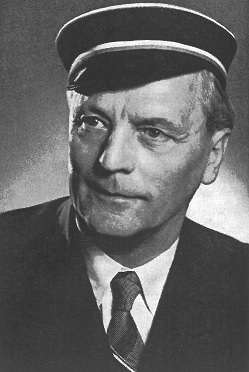Dr. Heinrich Gleißner

Personalia
Born:
Died:
Profession:
Persecution:
Protective custody 15.03.1938 - 24.05.1938,
Dachau concentration camp 24.05.1938 - 17.06.1939,
Imprisonment 01.10.1939 - 09.1.1939,
Buchenwald concentration camp 09.10.1939 - 15.12.1939,
Imprisonment 15.12.1939 - 31.12.1939,
Released,
Gau ban
KZ Number:
Memberships
Curriculum Vitae
Heinrich Gleißner attended the humanistic grammar school on Spittelwiese in Linz and was accepted into the Nibelungia Linz secondary school fraternity in 1907. After graduating from high school in 1912, he began studying at the Faculty of Law at the German Charles University in Prague. There he joined the Saxo-Bavaria student fraternity in 1912.
He interrupted his studies during the First World War and was drafted into the Tyrolean Rifle Regiment No. III in 1914. He took part in the campaigns in Russia and Italy. In October 1918, he was taken prisoner of war in Italy, from which he was only released in 1919 as a first lieutenant (retired).
He then continued his studies in Innsbruck and joined the Raeto-Bavaria student fraternity in the winter semester of 1919/1920. In March 1920, he obtained his doctorate in law. He then began working as a clerk for the Upper Austrian provincial government. In 1933 he was appointed Deputy Director of the newly established Upper Austrian Chamber of Agriculture, in 1937 Director of the Chamber and in January 1938 Executive Vice President. From 1933, he was a senior official in the VF. The state parliament unanimously elected him governor of Upper Austria in 1934.
After the Anschluss, Heinrich Gleißner was removed from office by the National Socialists on March 13, 1938 and taken into protective custody on March 15, 1938. On May 24, 1938, Heinrich Gleißner was transferred from the police detention centre in Linz to Dachau concentration camp, where he was temporarily released on June 17, 1939 after being mistreated by the SS escort team. In August 1938, he was dismissed from all functions without a pension; his wife Maria was granted a maintenance allowance, which could be revoked at any time. He was arrested again on October 1, 1939 and taken on a transport to the Buchenwald concentration camp on October 5, 1939. From here, he was taken to the main prison in Berlin on December 15, 1939 and held there until December 31, 1939. After his release, he was banned from the Gau and forced to stay in Berlin with his family. Here he worked as an employee at the company Braunkohle-Benzin AG (Braubag) until the end of the war. He also maintains contact with members of the Kreisau Circle. Carl Gördeler included him on his list as "Reich Minister for the Austrian Territories", which fortunately the Gestapo did not find out about.
As the bombing campaign in Berlin escalated at the end of 1943, Maria Gleisner returned to Linz with her children. In spring 1945, Heinrich Gleißner was given permission to leave Berlin and visit his family. He is able to make his way via Regensburg to his home town of Linz, where he arrives on April 21. However, he did not return to Berlin and was able to go into hiding with a farmer in the district of Vöcklabruck to await the arrival of the US Army.
Places
Persecution:
Honoring:
Residence:
Citations
Krause, Peter/Reinelt, Herbert/Schmitt, Helmut (2020): Farbe tragen, Farbe bekennen. Katholische Korporierte in Widerstand und Verfolgung. Teil 2. Kuhl, Manfred (ÖVfStG, Wien) S. 93/94.; Photo: ÖVfStg
